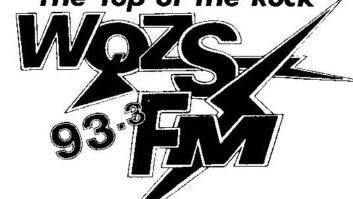(click thumbnail)The WAWZ Studio Circa 1972WAWZ(FM) in Zarephath, N.J., “Star 99.1,” originally went on the air as WAWZ(AM) in 1931, the flagship station of the Pillar of Fire Radio Network, owned by Pillar of Fire International.
Back then, as with all radio programming, it was “seat-of-your-pants” live radio, featuring preaching, live music and church services broadcast from the adjoining chapel.
In 1954, Pillar of Fire obtained a license to broadcast on the new FM band. In 1984, the AM station went dark and the AM license was sold.
(click thumbnail)A recent ‘before’ photo of the same studio shows a few changes.Today, WAWZ continues to broadcast 24/7 to most of New Jersey, New York City and eastern Pennsylvania. The format has since changed from preaching and teaching to contemporary Christian music. But with the advent of HD Radio multicasting, we now provide “Teach and Talk” programs on WAWZ-HD2 and a blend of Christian rock, pop and hip-hop on WAWZ-HD3, a.k.a. The Energy.
Up until April 2008, we were still operating out of the same control room, which was built in the early 1970s and looked the part. It was a cramped 7-by-12-foot room with space for an operator and maybe one guest.
This made doing a morning show with four personalities, plus any guests, uncomfortable at best.
Additionally, the facilities simply weren’t designed to accommodate state-of-the-art broadcasting tools, and it became obvious that something had to be done.
(click thumbnail)New Designcraft USA-built studio furniture waiting to be installed.Ideas were bandied about for the better part of two years and a design for a new main studio was agreed upon by the end of 2007. There was just one problem: Where would we broadcast from in the meantime?
Another problem the station faced is its location in one of New Jersey’s flood zones. While we don’t see post-Hurricane Katrina-style flooding (at least not since Floyd in 1999), the odd Nor’easter or just a week of solid rain can leave us with no access to our studios.
Last year, it was decided to address this issue by building an emergency studio at our transmitter site, located about 600 feet above sea level in nearby Martinsville. It has everything our main studio has, just scaled down a bit. We lovingly refer to the small, windowless concrete room as “The Bunker.”
(click thumbnail)New ceiling, paint, lights make a big difference.Not only would The Bunker serve to keep us on the air in the event of an emergency, it also would be our main studio while the real main studio was undergoing reconstruction.
Tear down this wall
Demolition on the main studio began on March 18.
Chief Engineer Ron Habegger and I began unplugging equipment and cutting and backpulling cables, many of which had been abandoned in place decades earlier. It was part demolition, part archaeology, trying to remember what was connected to what — and why.
(click thumbnail)The author, seated, and Chief Engineer Ron Habegger enjoy the new digs.Then came the task of removing the old furniture, which was built to last long after those who installed it had passed on. We had to remove a wall to expand the room into the adjoining hallway, adding many more square feet to the room. There was drywalling, electrical work, HVAC and carpeting to be done.
The new furniture was provided by Designcraft USA of Grand Rapids, Mich. They did a wonderful job of taking the dimensions and layout of a room that did not yet exist and creating beautiful and solidly built cabinetry that was easy to assemble.
The new studio was conceived from the get-go as a digital studio. We wanted as many audio paths as possible to be completely digital — from hard disk to transmitter. The Wheatstone D-75 console helped us get there. This modular console offered us a ton of flexibility, with each input configurable as either analog or digital. Yes, we still have a few analog sources.
We had installed a smaller version of the same console at The Bunker, using all analog inputs. It offered a myriad of other options as well, eliminating untold feet of now unnecessary wiring running from room-to-room.
(click thumbnail)The Down Under View of All the New GoodiesOur mic channels are fed by a group of Aphex 230 vocal processors with digital outputs. Our Broadcast Electronics AudioVault automation system feeds the console via Digigram’s miXart 8 AES cards. From the console, the signal travels digitally to our Moseley StarLink STL to our transmitter site, where it is processed and fed digitally to the Broadcast Electronics FMi 1405 transmitter. The difference in our on-air signal was immediately apparent. We’ve never sounded this clean before. No longer is our audio going through half a dozen A/D and D/A conversions and sounding like mud when it gets there.
With a few strategically placed rigid fiberglass panels and other accoutrements, on May 1, the new broadcast studio for Star 99.1 made its debut.
It was a pretty hairy six weeks, and Ron and I got the dirtiest we’ve been in a long time; but there were zero injuries and the on-air staff couldn’t be happier.
Morning show host and Program Director Johnny Stone says he still gets excited walking into the room every morning, and our Station Manager Scott Taylor has recently hinted at wanting his own air shift again. We look forward to many years of service from this new studio.
Got a new studio story to tell? Let us know at [email protected].


















